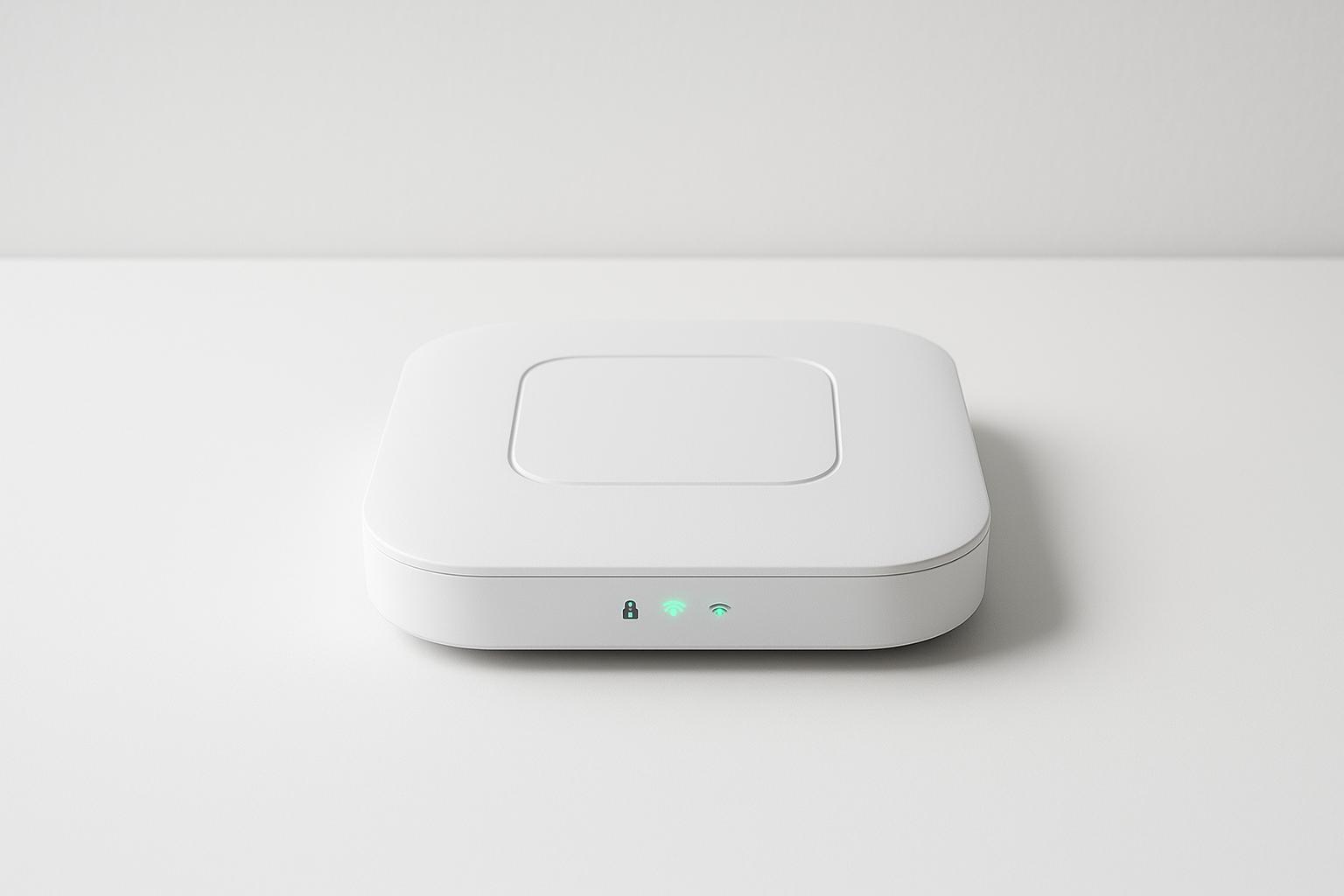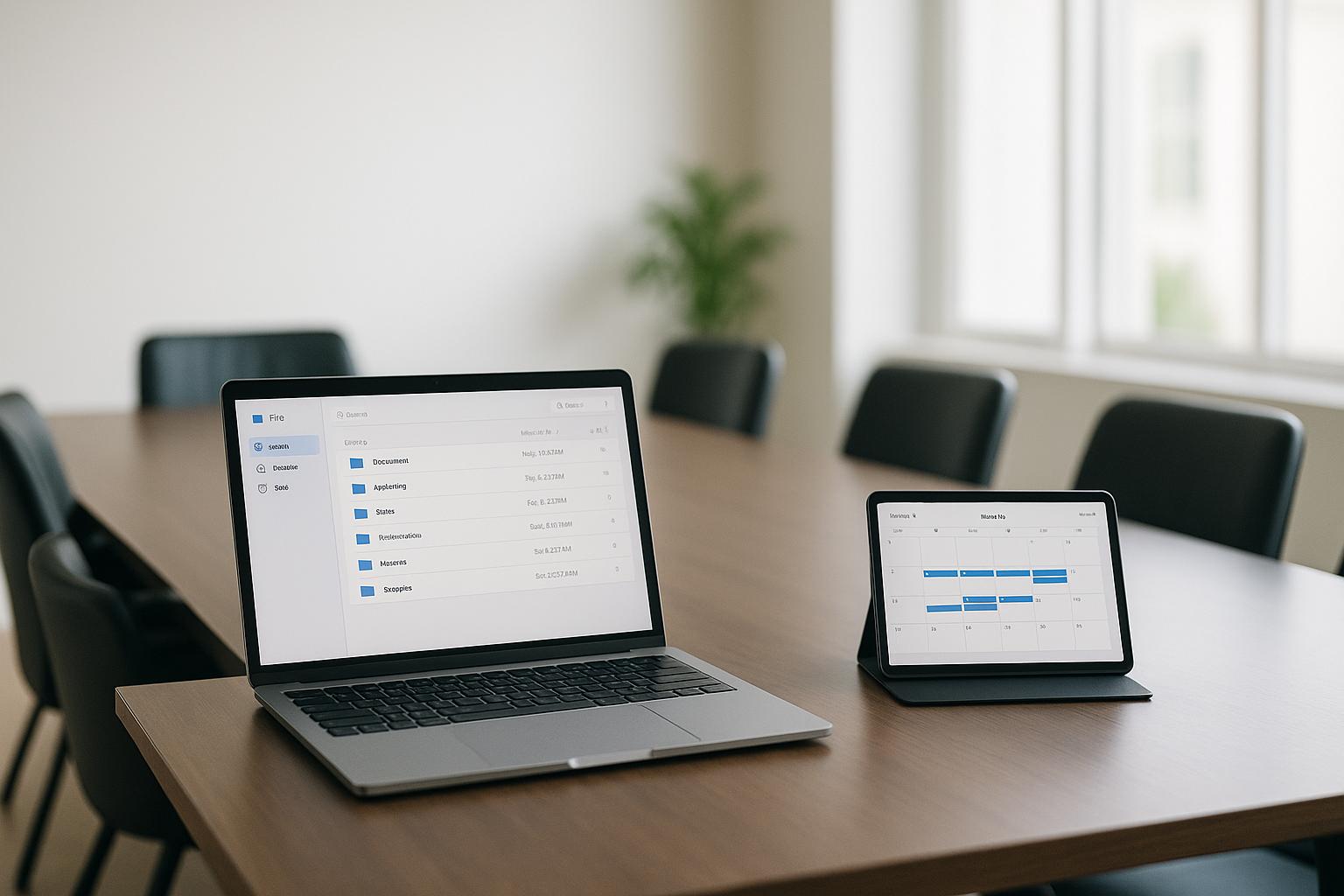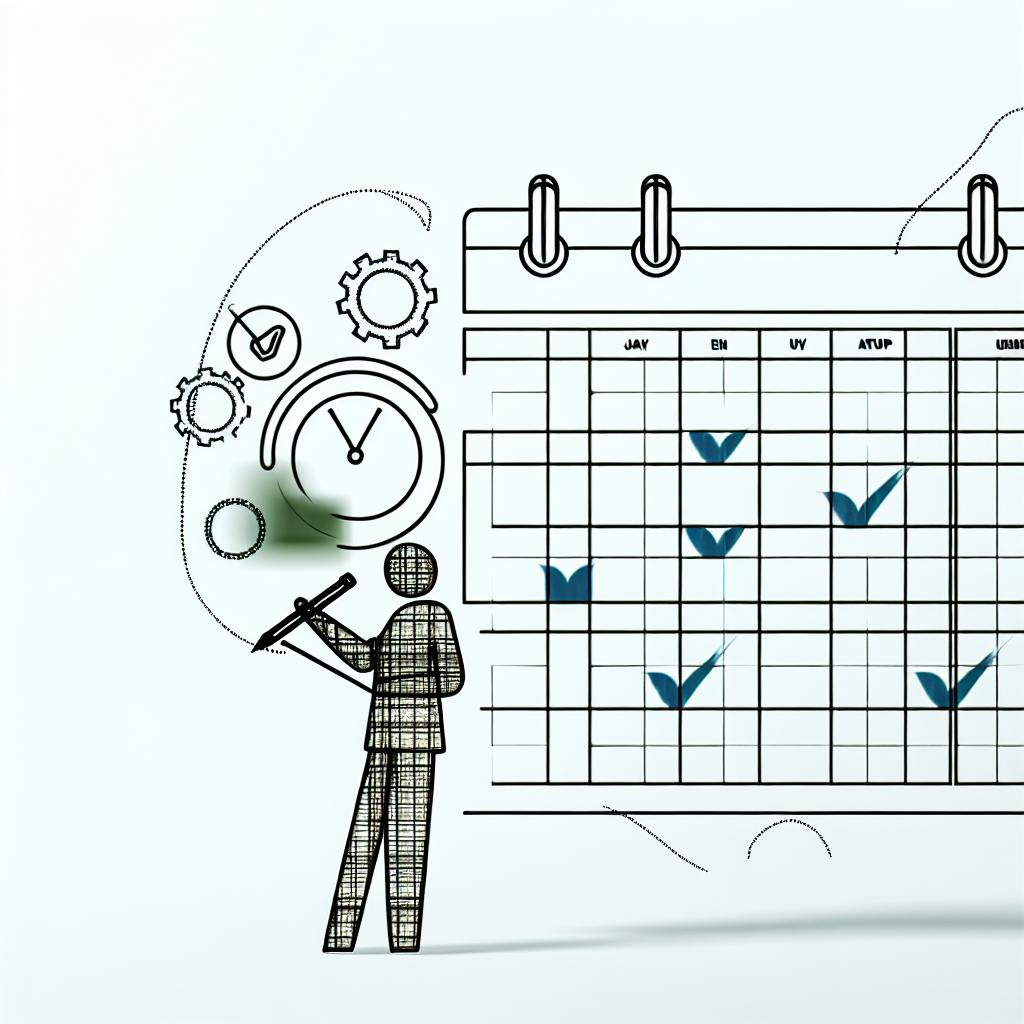Building a custom team chat app tailored to your business needs can streamline communication, increase productivity, and enhance collaboration. This guide covers everything from understanding your chat app needs to deployment and maintenance.
Related video from YouTube
Key Points:
-
Understand Chat App Needs
- Identify key features like real-time messaging, file sharing, and integrations
- Gather user input through interviews, surveys, and observations
-
Choose Tech Stack
- Select front-end frameworks like React, Angular, or Vue.js
- Use back-end technologies like Node.js, Python, or Ruby on Rails
- Implement real-time communication protocols like WebSockets, XMPP, or MQTT
- Choose a database like SQL, NoSQL, or in-memory
-
User Experience Design
- Design a simple, logical navigation and structure
- Incorporate visual design and branding elements
- Ensure accessibility and responsiveness across devices
- Conduct user testing and gather feedback
-
Core Features Implementation
- Real-time messaging using WebSockets
- Group chats and channels
- File sharing with cloud storage services
- Tool integrations via APIs and webhooks
- Search and archive using search engines
- Notifications and alerts with push notification services
-
Advanced Features
- Bots and automation
- Moderation tools
- Analytics and reporting
- Personalization options
- Localization
-
Security and Compliance
- Data encryption
- User authentication and access control
- Regulatory compliance (GDPR, HIPAA)
- Secure data storage and backups
-
Testing and Deployment
- Unit, integration, end-to-end, and performance testing
- User acceptance testing
- Deployment and maintenance strategies
By following this guide, you can create a robust and scalable custom team chat app that meets your unique business needs.
Understanding Chat App Needs
To build a successful custom team chat app, you need to know what your users want. This involves finding out the key features and functions your app should have, and getting input from users to make sure your app meets their needs.
Key Features
When building a custom team chat app, consider including these key features:
- Real-time messaging: Team members can instantly chat with each other, no matter where they are.
- Group chats and channels: Team members can communicate in groups, and organize conversations by topic or project.
- File sharing: Team members can share files, which is useful for collaborative projects.
- Integrations: Your app can connect with other tools your team uses, like project management software or CRM systems.
- Search: Team members can easily find specific conversations or files.
- Notifications: Team members get alerts when someone mentions them or shares a file with them.
Gathering User Input
To ensure your custom team chat app meets user needs, gather and analyze input from users. You can do this in several ways:
| Method | Description |
|---|---|
| Interviews | Speak with team members to understand their communication needs and preferences. |
| Surveys | Send surveys to team members to gather information about their communication habits and needs. |
| User observations | Watch team members using existing communication tools to identify areas for improvement and opportunities for innovation. |
| Feedback sessions | Hold sessions with team members to get input and feedback on the app's development. |
Choosing Tech Stack
Selecting the right technology stack is crucial when building a custom team chat app. The chosen stack will impact the app's performance, ease of use, and long-term maintenance. Here, we'll evaluate different technology options suitable for building team chat apps.
Front-end Frameworks
The front-end framework will determine the user interface and experience. Popular options include:
| Framework | Advantages | Drawbacks |
|---|---|---|
| React | Fast rendering, easy to learn, widely used | Steep learning curve for beginners, large ecosystem |
| Angular | Strong typing, robust ecosystem | Complex, difficult to learn, overhead |
| Vue.js | Easy to learn, flexible, growing ecosystem | Smaller community than React and Angular |
Back-end Tech
The back-end handles the app's logic, data storage, and communication. Common choices are:
| Language/Framework | Advantages | Drawbacks |
|---|---|---|
| Node.js | Fast, scalable, easy to learn, large ecosystem | Not ideal for complex computations, callback issues |
| Python | Easy to learn, flexible, scalable, large ecosystem | Slower than Node.js, complex syntax |
| Ruby on Rails | Strong conventions, robust ecosystem | Steep learning curve, complex syntax |
Real-time Communication
Real-time communication is essential for chat apps. Popular protocols include:
| Protocol | Advantages | Drawbacks |
|---|---|---|
| WebSockets | Bi-directional, low latency, easy to implement | Difficult to scale, complex to manage |
| XMPP | Open standard, flexible, scalable, large ecosystem | Complex to implement, outdated |
| MQTT | Lightweight, scalable, easy to implement, growing ecosystem | Limited features compared to WebSockets and XMPP |
Databases
The database will store and manage the app's data. Popular options include:
| Database | Advantages | Drawbacks |
|---|---|---|
| SQL (e.g., PostgreSQL, MySQL) | Structured data storage, reliable, mature | Limited flexibility, complex for large-scale applications |
| NoSQL (e.g., MongoDB, Cassandra) | Flexible, scalable, easy to use | Limited data consistency, complex querying |
| In-memory (e.g., Redis) | Fast, efficient, simple to use | Limited storage capacity, data loss risk |
The choice of tech stack will depend on factors like team expertise, project requirements, and scalability needs. It's essential to carefully evaluate each option's pros and cons to make an informed decision.
User Experience Design
A great user experience is key for a team chat app. The design should make it easy for users to find what they need and enjoy using the app.
Navigation and Structure
The app's layout and organization should be simple and logical:
- Group features into clear categories
- Use a consistent design throughout
- Make important features easy to find
- Include a robust search to quickly locate messages or files
Visual Design and Branding
The visuals should match your brand and appeal to your users:
- Choose colors that fit your brand personality
- Use clear, readable fonts consistently
- Icons and graphics should be simple and on-brand
- Design for different devices and screen sizes
Accessibility and Responsiveness
The app should be usable by everyone, regardless of abilities or devices:
- Follow accessibility guidelines (WCAG 2.1)
- Design for different screen sizes and devices
- Test on various devices and browsers
User Testing
Get feedback from users to improve the design:
- Conduct usability tests to find issues
- Gather feedback through surveys, interviews, etc.
- Analyze user behavior and metrics
Interface Examples
Here are some well-designed team chat apps:
| App | Key Features |
|---|---|
| Slack | Simple navigation, custom channels, good search |
| Microsoft Teams | Clean design, Office 365 integration, multi-device |
| Google Workspace | Minimalist, Google app integration, collaboration tools |
Following user-centered design principles like these examples will help create an intuitive and effective team chat app.
sbb-itb-d1a6c90
Core Features Implementation
The core features are the backbone of a team chat app. Here, we'll discuss how to develop these essential features, providing code examples and best practices for ensuring performance, scalability, and reliability.
Real-time Messaging
Real-time messaging allows team members to instantly chat with each other, no matter where they are. To implement this, you can use WebSockets, a protocol that enables real-time communication between the client and server. Here's an example of establishing a WebSocket connection in JavaScript:
const socket = new WebSocket('ws://example.com/ws');
socket.onmessage = (event) => {
console.log(`Received message: ${event.data}`);
};
socket.onopen = () => {
console.log('Connected to the WebSocket server');
};
socket.onerror = (event) => {
console.log('Error occurred while connecting to the WebSocket server');
};
socket.onclose = () => {
console.log('Disconnected from the WebSocket server');
};
When implementing real-time messaging, consider low latency data delivery, message delivery guarantees, scalability, elasticity, and reliability to ensure a seamless communication experience.
Group Chats and Channels
Group chats and channels allow team members to communicate in groups and organize conversations by topic or project. To set up these features, create a data model for channels and group chats, and implement functionality to create, manage, and delete them. Here's an example of creating a channel using Node.js:
const express = require('express');
const app = express();
app.post('/channels', (req, res) => {
const channelName = req.body.channelName;
const channelDescription = req.body.channelDescription;
// Create a new channel in the database
db.query(`INSERT INTO channels (name, description) VALUES (?,?)`, [channelName, channelDescription], (err, results) => {
if (err) {
res.status(500).send({ error: 'Failed to create channel' });
} else {
res.send({ message: `Channel created successfully` });
}
});
});
When implementing group chats and channels, consider features like channel creation, management, deletion, user permissions, and access control.
File Sharing
File sharing allows team members to share files, which is useful for collaborative projects. To integrate file sharing, you can use a cloud storage service like AWS S3 or Google Cloud Storage. Here's an example of uploading a file to AWS S3 using Node.js:
const AWS = require('aws-sdk');
const s3 = new AWS.S3({
accessKeyId: 'YOUR_ACCESS_KEY_ID',
secretAccessKey: 'YOUR_SECRET_ACCESS_KEY',
region: 'YOUR_REGION'
});
const fileBuffer = fs.readFileSync('example.txt');
const params = {
Bucket: 'YOUR_BUCKET_NAME',
Key: 'example.txt',
Body: fileBuffer
};
s3.upload(params, (err, data) => {
if (err) {
console.log(err);
} else {
console.log(`File uploaded successfully: ${data.Location}`);
}
});
When implementing file sharing, consider features like file upload, download, management, security, and access control.
Tool Integrations
Tool integrations allow your team chat app to connect with other productivity tools and services your team uses. To integrate with other tools, you can use APIs and webhooks. Here's an example of integrating with the GitHub API using Node.js:
const axios = require('axios');
axios.get('https://api.github.com/repos/octocat/hello-world/issues', {
headers: {
'Authorization': 'Bearer YOUR_GITHUB_TOKEN'
}
})
.then(response => {
console.log(response.data);
})
.catch(error => {
console.log(error);
});
When implementing tool integrations, consider features like API connectivity, data synchronization, and user authentication.
Search and Archive
Search and archive features allow team members to easily find specific conversations or files. To implement these features, you can use a search engine like Elasticsearch or Algolia. Here's an example of creating an Elasticsearch index using Node.js:
const elasticsearch = require('elasticsearch');
const client = new elasticsearch.Client({
host: 'YOUR_ELASTICSEARCH_HOST',
apiVersion: '7.10'
});
client.indices.create({
index: 'my_index'
})
.then(response => {
console.log(response);
})
.catch(error => {
console.log(error);
});
When implementing search and archive features, consider features like search query parsing, result ranking, and data indexing.
Notifications and Alerts
Notifications and alerts inform team members when someone mentions them or shares a file with them. To implement these features, you can use a notification service like Firebase Cloud Messaging or Apple Push Notification Service. Here's an example of sending a push notification using Firebase Cloud Messaging:
const admin = require('firebase-admin');
admin.initializeApp({
credential: admin.credential.cert('YOUR_Firebase_CREDENTIAL')
});
const messaging = admin.messaging();
const message = {
data: {
title: 'Hello, World!',
body: 'This is a push notification'
},
token: 'YOUR_DEVICE_TOKEN'
};
messaging.send(message)
.then(response => {
console.log(response);
})
.catch(error => {
console.log(error);
});
When implementing notifications and alerts, consider features like push notification delivery, in-app notification display, and user preferences.
Advanced Features
Here are some advanced features that can take your team chat app to the next level:
Bots and Automation
Bots can automate repetitive tasks, freeing up users to focus on more important work. For example, you can create a bot that automatically responds to common questions or provides basic support. Bots can also automate tasks like scheduling meetings, sending reminders, and generating reports.
When implementing bots, consider:
- Defining the bot's functionality to avoid overwhelming users
- Making the bot easily accessible and user-friendly
- Providing clear instructions on how to interact with the bot
Moderation Tools
Moderation tools help maintain a respectful chat environment. These tools allow administrators to manage user behavior, monitor conversations, and take action when necessary. Some moderation tools include:
| Tool | Description |
|---|---|
| User banning or suspension | Temporarily or permanently restrict users from accessing the chat |
| Message deletion or editing | Remove or modify inappropriate messages |
| Warning systems | Issue warnings to users who violate chat rules |
| Chat logging and analytics | Track and analyze chat activity for moderation purposes |
When implementing moderation tools, consider:
- Establishing clear chat rules and guidelines
- Training administrators to use moderation tools effectively
- Providing users with a clear understanding of the moderation process
Analytics and Reporting
Analytics and reporting tools provide insights into user behavior, allowing you to optimize the chat app experience. Some analytics to consider include:
- User engagement metrics (e.g., active users, message volume)
- Conversation metrics (e.g., response time, resolution rate)
- User feedback and sentiment analysis
When implementing analytics and reporting, consider:
- Ensuring data accuracy and timeliness
- Providing users with access to relevant analytics and insights
- Using analytics to inform product development and improvement
Personalization Options
Personalization options allow users to customize their chat experience, increasing user satisfaction and engagement. Some personalization options include:
- Customizable notification settings
- User profile customization (e.g., avatars, status updates)
- Chat theme and layout customization
When implementing personalization options, consider:
- Making personalization options user-friendly and accessible
- Providing clear instructions on how to customize the experience
- Balancing personalization options with overall chat app functionality
Localization
Localization is important for teams with users from diverse linguistic and cultural backgrounds. Localization considerations include:
1. Language support
- Translation
- Formatting for different languages
2. Cultural sensitivity and awareness
3. Regional compliance and regulations
When implementing localization, consider:
- Conducting thorough research on target regions and languages
- Ensuring consistent localization throughout the chat app
- Providing clear instructions on how to access localized features
Security and Compliance
Keeping your team chat app secure and compliant is crucial. With cyber threats and data breaches on the rise, you need to balance open communication with robust security measures. This section covers the importance of security and compliance, and provides best practices for implementing strong security.
Data Encryption
Encrypting data is key to securing your team chat app:
- Use end-to-end encryption to protect data in transit
- Encrypt data at rest using secure storage solutions
- Store and manage encryption keys securely
User Authentication
Strong user authentication and access control are essential:
| Method | Description |
|---|---|
| Multi-factor authentication | Prevents unauthorized access by requiring additional verification |
| Secure password storage | Use hashing algorithms to store passwords securely |
| Access control policies | Establish clear rules for who can access what |
Regulatory Compliance
Comply with industry regulations like GDPR and HIPAA:
- Research relevant regulations and requirements
- Implement data protection and privacy measures
- Establish clear compliance policies and procedures
Data Storage and Backup
Secure data storage and regular backups ensure business continuity:
| Practice | Description |
|---|---|
| Secure storage | Use encrypted databases or other secure solutions |
| Regular backups | Schedule frequent data backups |
| Backup security | Store backups securely and protect them |
Testing and Deployment
Testing Your App
Testing is crucial to ensure your team chat app works as intended. Here are some testing strategies:
Unit Testing
Unit testing involves testing individual components like functions or modules to verify they work correctly.
Integration Testing
Integration testing checks how different components interact with each other.
End-to-End Testing
End-to-end testing simulates real-world scenarios by testing the entire app from start to finish.
Performance Testing
Performance testing evaluates how your app handles large numbers of users and traffic. Tools like WebRTC Test or WebSocket Test can identify performance bottlenecks.
User Acceptance Testing
User acceptance testing (UAT) involves real users testing your app and providing feedback to ensure it meets their needs. This can be done through beta testing or user testing sessions.
Deploying Your App
Deploying your app involves setting up a production environment and configuring your app to run on it. This includes:
- Setting up servers
- Configuring databases
- Establishing connections between app components
Tools like Docker can help containerize your app for easier deployment.
Maintaining and Updating
After deployment, it's important to maintain and update your app regularly. This involves:
| Task | Description |
|---|---|
| Monitoring performance | Tracking app performance and identifying issues |
| Fixing bugs | Resolving any bugs or errors |
| Adding new features | Implementing new functionality based on user feedback |
You can use CI/CD pipelines to automate deployment and updates. Gathering user feedback and iterating on your app based on that feedback is also crucial for keeping it relevant and useful.
Conclusion
You've reached the end of this guide on building a custom team chat app! By now, you should have a clear understanding of the key features, technologies, and best practices needed to create a tailored solution for your business.
As you begin developing your team chat app, stay updated on the latest industry trends and technologies. Continuously gather user feedback and make improvements based on that feedback to keep your app relevant and useful.
Building a custom team chat app is a significant investment, but it can greatly improve collaboration, productivity, and customer satisfaction. By following the guidelines in this guide, you can create a robust and scalable solution that meets your unique business needs.
If you have any further questions or need additional resources, feel free to explore our website for more articles, tutorials, and expert insights on team chat app development.


